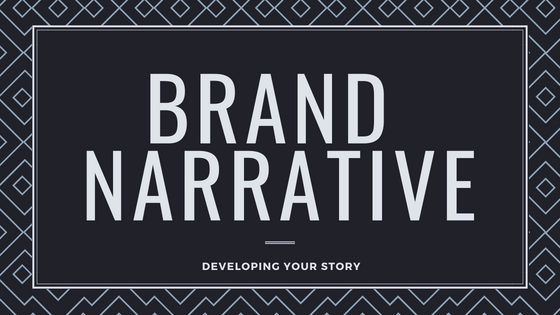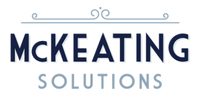What is Your Narrative?

Every brand, every entrepreneur has a story. How do you tell it?
First let’s dive into what a brand story or brand narrative means. While these words might inspire thoughts of fiction, yours should be anything but. Your brand, your products and/or services exist in our world, they interact with your customers’ lives in one way or another. Your narrative or story is the way that you capture those interactions, and explain them to new and future customers.
Let’s look at an example – the ever recognizable brand CocaCola. Their legacy product coke is a refreshing carbonated beverage best served cold. Coke is also full of sugar and acidic enough to take the rust off of metal so I’m told. Is that what they tell us through their branding?
Absolutely not.
Their current marketing initiatives, which all stem from their overarching brand narrative, tell us that coke is about the experience we have when drinking their products. Their current ads, and product labels invite us to “share” a coke with our friends and family. In essence, they are telling us that their single serving packaged in an aluminum can or plastic bottle, can bring us all together for an enjoyable way to pass the time.
That’s a lot better than “Buy our sugar filled beverage and risk obesity and/or eroding away your stomach lining” right?
While you might not have decades of serving your customers, or even an offering that could be considered a legacy product, you do have a brand, and in that brand a story. At this point in the post you might be thinking but I’m not a story teller, I’m not a marketer…if I was, my startup or small business would have been a marketing consulting agency say like, McKeating Solutions. I get it. Not everyone feels comfortable with writing, but you do have the ability, I promise you. And if you still think that you don’t have it, or that you don’t have the time, you can always hire to me to help pull the elements of that story out of you, and write it for you.
I’ve told you that you can architect your own brand narrative, so let’s think about the art of storytelling. What are the key or essential elements to making a good story? You need to tell your audience the who, the what, the where, the when and the how right?
The Who:
Either you as an entrepreneur and a person, or your brand is the who or the heart of your story. Your products will also feature but they are more of the what, especially in the early stages of a business. Who are you? Who or what is the personality that your brand embodies?
Let’s look at GirlBoss Designer, the fem-trepreneur who helped me with the McKeating Solutions graphic brand elements. She is a woman, who embraces the visual aspects of femininity. She is a graphic designer and expert in branding. And she combines them to form her branding. This is her who. Literally it’s who she is because as an entrepreneur, whose services involve her personal creativity, she is her brand.
The What:
Especially in early stage businesses, who’s products aren’t yet marketplace staples (think of the big name, easily recognized by most people in an industry or niche kind of products: Like Nikon for camera’s, or Umbro in soccer), your what will be your products. Your brand story at this stage introduces your products to your audience or target audience.
Again, Let’s take Kristin from GirlBoss Designer. Her what, is the culmination of the packages that she offers. I chose to start with her essential brand elements service, which is a consultative development process that delivers me with a color theme, logo, fonts, and style sheet (how to use the aforementioned elements). Kristin also offers website design, and branding consultations. She combines her who – the feminine designer, with the what, in order to piece together the subject of her story.
The Where:
This story element is essential, yet it differs for different types of entrepreneurs, startups and small businesses. If you offer location based services, like my friend at Events by Elaqui, who is a Pittsburgh based wedding planner, the where is a physical local or geographic area. But if you are like GirlBoss Designer or myself (I literally have clients from the western US, to Pittsburgh, to Sweden), your where could be broader, ie the digital sphere that is the internet.
Your where could also be an area of expertise, think of industries with broad scopes like medicine. You could be a labor and delivery specialist, a researcher in early childhood interventions for infectious diseases, or a clinician who follows up with moms and babies after delivery – all three of these specialize in the same type of patients, ie clients within the very broad scope of healthcare/medicine.
The When:
When telling your brand story, the when can get a bit tricky. We tend to want to make this part about when our business was founded, or when we had the spark to go out on our own. And this can be important. I talk about this a lot in the content that I write for my brand, but what is more important in terms of my services and my clients, is when or better, what part in my customer’s journey can I help the most.
Events by Elaqui is all about timing, so while they might have different “when’s”, they’ll want to focus on this. GirlBoss Designer also focuses on a few different points in their customer’s lifecycle – either in the early stages when developing a brand, further into their lifecycle when they need to refresh their brand, and consulting for those in between times.
The Why:
This part is two-fold and very important because it brings it all together. This is literally why you left what you were doing before and started your own business, and why your prospective customers should choose your products and services. In today’s digital age, we have the ability to make purchases from many different service providers. We can drive to locations, or order online. Your why might be that you are passionate about providing products that impact people’s lives, and in order to do so, you go above and beyond your competition when it comes to customer service. Or your prices might be better because you have found ways to keep the same quality but reduce cost.
When it came time for me to choose a graphic designer, the why for GirlBoss Designer was what sold me. She is in my boat. We’re both creative, female entrepreneurs whose branding is our personality, her prices here fair (both to her and her time, and to me), and the quality of her work really spoke to me. That really resonated with me.


